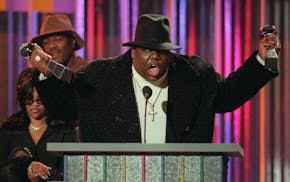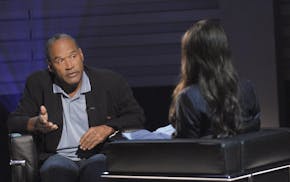In a breakthrough year for women, it's only fitting that many of the best wine books were penned by those of the female persuasion.
Yes, there always have been formidable women in the wine- writing world. Jancis Robinson and Karen MacNeil, for starters, have few, if any, peers.
But 2017 has brought some fresh faces to the fore, and lovers of fermented grape juice are the better for it.
Here are a half-dozen of my favorite titles of the year, ladies first:
The most buzzed-about work of the year was undoubtedly Bianca Bosker's "Cork Dork" (Penguin Books, 352 pages, $17). Subtitled "A Wine-Fueled Adventure Among the Obsessive Sommeliers, Big Bottle Hunters, and Rogue Scientists Who Taught Me to Live for Taste" (whew), it's a crisply written, often witty account of Bosker's 18 months diving nose-first into sommelier training.
While she finagles her way into New York's inner vinous sanctum, she finds that "[on] most days, I was drunk by noon, hung over by 2 p.m." But she learns ravenously about the brands and the profession, the knowledge and the infighting — which is why this has aptly been called the "Kitchen Confidential" of wine books.
In "Wine Revolution: The World's Best Organic, Biodynamic and Natural Wines" (Jacqui Small, 256 pages, $35), Jane Anson delves just as deeply into an increasingly important realm. In detailed but plain-spoken prose as transparent and lively as her subject matter, she correctly posits that winemakers "who care about authenticity," such as Aubert de Villaine and Elisabetta Foradori (a Twin Cities visitor earlier this year), "should be talked about in the same breath as chefs like [Alice] Waters, [Dan] Barber and the like."
The first quarter of Anson's masterpiece clearly and cleanly defines and delineates five categories: organic, biodynamic, natural, orange and low-intervention. The bulk of the book is about specific wines and the people who grow and make them. While the majority of the producers are from Europe, Anson leaves room for two stellar Napa vintners, Cathy Corison of Corison and Christopher Howell of Cain, along with Moe Momtazi of Maysara in Oregon. Along the way, she simplifies and democratizes a controversial domain.
I'm inclined to be jealous of Anne Fadiman, who grew up surrounded by the world's finest bottles, thanks to her father, writer/wine enthusiast Clifton Fadiman. But in "The Wine Lover's Daughter: A Memoir" (Farrar, Straus and Giroux, 272 pages, $25), she openly and adroitly chronicles the pleasure and pain of being raised by the fastidious essayist/quiz-show host/New Yorker book critic. (She will be in Minneapolis on Dec. 18 at 7:30 p.m., on behalf of Rain Taxi, to speak at the Soap Factory (514 SE. 2nd St., Mpls.). Tickets are $5 and available in advance at raintaxi.com.)
"By the sixth grade," she writes, "I would have recognized the names of all four Premier Cru Bordeaux." But she never embraced wine with anything approaching her father's ardor. She did inherit his writing chops, however, and makes wine the fulcrum of a riveting memoir that captures the essence of both of them.
Another erudite soul, Mike "The Wine Economist" Veseth, treads a playful path throughout "Around the World in 80 Wines" (Rowman & Littlefield, 224 pages, $24.95), replicating Jules Verne's classic "Around the World in 80 Days."
Besides citing and assessing scores of great wines, Veseth breaks out of stuffy academia, seeking out which Spanish wines most exemplify soccer powerhouses Real Madrid and Barcelona, or tracking down and profiling "The Mondavi of Mumbai."
During his journey shadowing the route of Phileas Fogg and Passepartout, readers can glean fascinating minutiae (Thailand's biggest wine producer is a man who co-founded Red Bull) or go more in-depth on topics such as riesling's identity crisis or how a major peso crisis helped spawn Argentina's booming malbec industry.
Every bit as edifying and entertaining is Patrick Alexander's "Booklovers' Guide to Wine" (Mango, 394 pages, $19.95), which takes pairing to a new level: matching great reading with tasty wines. This book would be a highly recommendable primer on wine without the literary references as Alexander guides us through regions and grapes, plus how to truly appreciate this nectar.
But the hefty chapter matching grapes with authors is pure delight: albariño and J.R.R. Tolkien, chardonnay and Jane Austen, and his personal favorite, gewürztraminer and Marcel Proust. Amazingly, every explanation of the matchups makes so much sense that it's impossible to imagine another author for that wine, or vice versa.
On the other hand, Jon Bonné eschews pairing, or at last fretting over it, in "The New Wine Rules" (Ten Speed Press, 152 pages, $14.99). "Nearly every pairing 'rule' can be disproved," he writes. "You can drink rosé any time of year. Don't save a great bottle for anything more than a rainy day."
So of course Bonné proceeds to list and explain 89 rules: "Dry wine isn't as dry as you think"; "No two bottles of wine — even of the same wine — are exactly alike"; "Not every new-wave wine is cool. Not every classic wine is uncool."
Ah, wisdom: the best possible match with wine. Along with a good book.
Bill Ward writes at decant-this.com. Follow him on Twitter: @billward4.

ABBA, Blondie, and the Notorious B.I.G. enter the National Recording Registry
West Virginia transgender sports ban discriminates against teen athlete, appeals court says
Dr. Martens shares plunge to record low after weak US revenue outlook
Visa fees for international artists to tour in the US shot up 250% in April. It could be devastating

